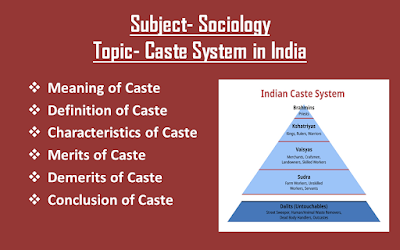Kinship- Meaning, Definition, Characteristics and Types
# Meaning of Kinship
Kinship refers to the relationships among individuals who are related by blood, marriage, or adoption. It describes the bonds and connections between family members, extended family, and clan members.
Kinship is the web of relationships among individuals who are connected by blood (biological ties), marriage (affinal ties), adoption (adoptive ties) and social or spiritual bonds (fictive ties).
# Definition of Kinship
1. According to D.N. Majumder:- "Kinship is a network of social relationships that arises from the interactions and interdependencies of individuals who are related by blood, marriage, or adoption.”
2. According to Anthony Giddens:- "Kinship refers to the social relationships and connections that exist between individuals who are related by descent, marriage, or adoption.”
3. According to Emile Durkheim:- "A system of social relationships based on descent, marriage, and adoption, which defines an individual's place within a social group."
4. According to George Peter Murdock:- "A social bond based on blood, marriage, or adoption, which creates rights and obligations among individuals."
5. According to Robin Fox:- "A network of relationships among individuals who are related by descent, marriage, or adoption."
# Characteristics of Kinship
1. Social connection:- Kinship creates a sense of belonging and connection among individuals.
2. Shared identity:- Kinship ties shape individual identities and sense of self.
3. Reciprocal rights:- Kinship involves reciprocal rights and obligations among individuals.
4. Emotional bonds:- Kinship ties are characterized by emotional bonds and interdependencies.
5. Cultural context:- Kinship is shaped by cultural and historical contexts.
6. Biological ties:- Kinship involves biological relationships through blood and descent.
7. Social ties:- Kinship also involves social relationships through marriage and adoption.
8. Hierarchy:- Kinship relationships often involve hierarchies and authority structures.
9. Shared resources:- Kinship ties often involve shared resources, such as property and inheritance.
10. Rituals and ceremonies:- Kinship is often marked by rituals and ceremonies, such as weddings and funerals.
11. Social support:- Kinship provides emotional, financial, and practical support.
12. Flexibility and adaptability:- Kinship relationships can be flexible and adaptable to changing circumstances.
13. Enduring relationships:- Kinship relationships are often enduring and long-lasting, transcending time and distance.
14. Universal:- Kinship relations are found in all parts of the world. In fact, no one lives without relationships. Therefore, kinship is a universal institution in society.
15. Ancient concept:- Kinship is not a new concept in society; it is an ancient concept that still prevails in present-day society.
# Types of Kinship
1. According to the relationship based on marriage and descent
Kinship based on marriage and descent are sub-divided into two categories:-
(a) Consanguineous Kinship:- Consanguineous kinship refers to a type of kinship that is based on blood relationships, where individuals are related through a common ancestor. This is the most basic and universal type of kinship, based on blood or birth. It includes relationships between parents and children, and siblings. This type of kinship is also known as “blood kinship” or “biological kinship”.
(b) Affinal Kinship:- Affinal kinship refers to a type of kinship that is based on marriage or marital relationships, rather than blood ties. This kinship is based on marriage, and includes the relationship between a husband and wife. It can also include new relationships that form between other members of the family when a marriage takes place. It is also known as “in-law kinship” or “marital kinship”.
2. According to the degree of kinship
Kinship according to the degree of kinship are sub-divided into three categories:-
(a) Primary Kinship:- This includes the closest relatives, such as parents and siblings. In most cultures, these are the individuals with whom you have the most direct and intimate relationships. For example, your mother, father, brothers, and sisters are considered your primary kin.
(b) Secondary Kinship:- This includes relatives who are one step removed from the primary kin. Examples of secondary kin include grandparents, aunts, uncles, and first cousins. These relationships are still significant but are not as close as those in primary kinship.
(c) Tertiary Kinship:- This level encompasses relationships that are further removed, such as great-grandparents, great-aunts, great-uncles, and second cousins. These individuals are part of your extended family, but the connection is more distant compared to primary and secondary kin.
Watch video on YouTube





